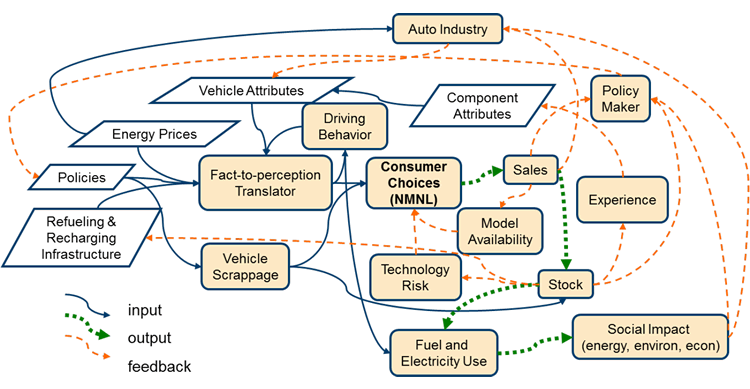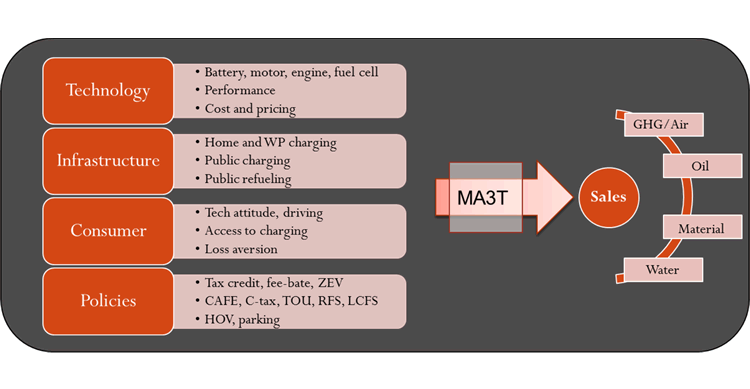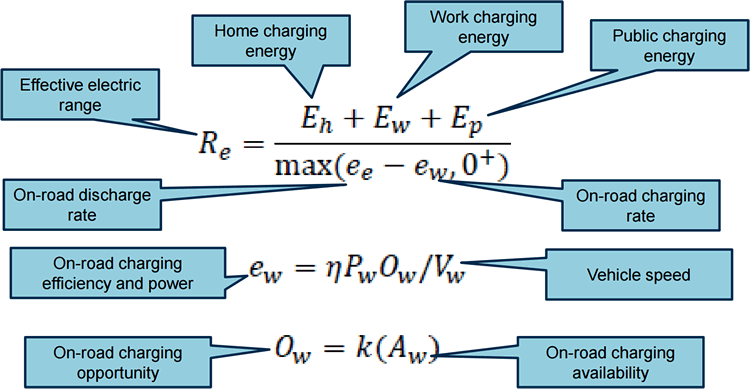Introduction to MA3T
Understanding the diverse purchasing behaviors among individuals is key for designing efficient and effective policies for promoting advanced vehicle technologies.
To address this need, ORNL developed the Market Acceptance of Advanced Automotive Technologies (MA3T) model, a market simulation model for the DOE Vehicle Technologies Program.
Implemented using Microsoft Excel for Windows, MA3T simulates market demand for advanced vehicle technologies by representing relevant attributes of technologies and consumer behavior such as technological learning by doing, range anxiety, access to recharging points, daily driving patterns, and willingness to accept technological innovation.
Implemented using Python, MA3T simulates market demand for advanced vehicle technologies by incorporating dynamic attributes of both the technology and its consumers. In this implementation, key factors are modeled in a robust, flexible environment and Python’s extensive libraries and modern development ecosystem not only offer improved scalability and performance compared to the original Excel version but also enhance integration with other analytical tools, making it a more accessible and widely accepted platform for both researchers and industry practitioners.
MA3T Python
MA3T Model Framework
Distinguising model characteristics
- Technology richness
- Detailed consumer segmentation
- Market dynamics
- Daily distance distribution
- Range-infrastructure characterization
Market choices, segments, and dimensions
MA3T includes 40 choices consisting of 20 powertrain technologies for each of two vehicle size classes, passenger cars and light duty trucks. MA3T considers U.S. household users of these vehicles as the consumer market, which is disaggregated into 9,180 segments based on 6 dimensions:
- States
- Residential areas
- Attitudes toward novel technologies
- Driving patterns
- Home recharging situations
- Work recharging situations
Market penetrations, product diversity, and risk
MA3T projections currently cover the period from 2005 to 2050 and capture the temporal interaction between market penetrations and product diversity and risk. MA3T characterizes daily driving distance variation with the Gamma distribution, validated with real-world high-resolution travel data. MA3T explicitly quantifies range anxiety for electric vehicles and reflects the effect of charging and refueling infrastructure on the appeal of plug-in electric vehicles and alternative fuel vehicles.






